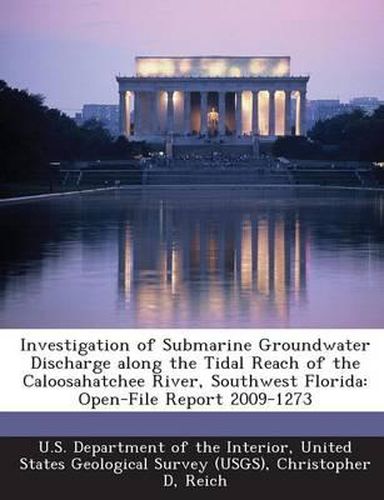Readings Newsletter
Become a Readings Member to make your shopping experience even easier.
Sign in or sign up for free!
You’re not far away from qualifying for FREE standard shipping within Australia
You’ve qualified for FREE standard shipping within Australia
The cart is loading…






The tidal reach of the Caloosahatchee River is an estuarine habitat that supports a diverse assemblage of biota including aquatic vegetation, shellfish, and finfish. The system has been highly modified by anthropogenic activity over the last 150 years (South Florida Water Management District (SFWMD), 2009). For example, the river was channelized and connected to Lake Okeechobee in 1881 (via canal C-43). Subsequently, three control structures (spillway and locks) were installed for flood protection (S-77 and S-78 in the 1930s) and for saltwater-intrusion prevention (S-79, W.P. Franklin Lock and Dam in 1966). The emplacement of these structures and their impact to natural water flow have been blamed for water-quality problems downstream within the estuary (Flaig and Capece, 1998; SFWMD, 2009). Doering and Chamberlain (1999) found that the operation of these control structures caused large and often rapid variations in salinity during various times of the year. Variable salinities could have deleterious impacts on the health of organisms in the Caloosahatchee River estuary. Flow restriction along the Caloosahatchee has also been linked to surface-water eutrophication problems (Doering and Chamberlain, 1999; SFWMD, 2009) and bottom-sediment contamination (Fernandez and others, 1999). Sources of nutrients (nitrogen and phosphorous) that cause eutrophication are primarily from residential sources and agriculture, though wastewater-treatment-plant discharges can also play a major role (SFWMD, 2009). The pathway for many of these nutrients is by land runoff and direct discharge from stormwater drains. An often overlooked source of nutrients and other chemical constituents is from submarine groundwater discharge (SGD). SGD can be either a diffuse or point source (for example, submarine springs) of nutrients and other chemical constituents to coastal waters (Valiela and others, 1990; Swarzenski and others, 2001; 2006; 2007; 2008). SGD can be composed of either fresh or marin
$9.00 standard shipping within Australia
FREE standard shipping within Australia for orders over $100.00
Express & International shipping calculated at checkout
The tidal reach of the Caloosahatchee River is an estuarine habitat that supports a diverse assemblage of biota including aquatic vegetation, shellfish, and finfish. The system has been highly modified by anthropogenic activity over the last 150 years (South Florida Water Management District (SFWMD), 2009). For example, the river was channelized and connected to Lake Okeechobee in 1881 (via canal C-43). Subsequently, three control structures (spillway and locks) were installed for flood protection (S-77 and S-78 in the 1930s) and for saltwater-intrusion prevention (S-79, W.P. Franklin Lock and Dam in 1966). The emplacement of these structures and their impact to natural water flow have been blamed for water-quality problems downstream within the estuary (Flaig and Capece, 1998; SFWMD, 2009). Doering and Chamberlain (1999) found that the operation of these control structures caused large and often rapid variations in salinity during various times of the year. Variable salinities could have deleterious impacts on the health of organisms in the Caloosahatchee River estuary. Flow restriction along the Caloosahatchee has also been linked to surface-water eutrophication problems (Doering and Chamberlain, 1999; SFWMD, 2009) and bottom-sediment contamination (Fernandez and others, 1999). Sources of nutrients (nitrogen and phosphorous) that cause eutrophication are primarily from residential sources and agriculture, though wastewater-treatment-plant discharges can also play a major role (SFWMD, 2009). The pathway for many of these nutrients is by land runoff and direct discharge from stormwater drains. An often overlooked source of nutrients and other chemical constituents is from submarine groundwater discharge (SGD). SGD can be either a diffuse or point source (for example, submarine springs) of nutrients and other chemical constituents to coastal waters (Valiela and others, 1990; Swarzenski and others, 2001; 2006; 2007; 2008). SGD can be composed of either fresh or marin